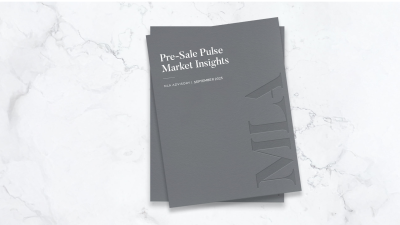In July, resale markets across Greater Vancouver, Fraser Valley, and Victoria experienced a notable increase in inventory levels while buyer activity remained subdued. This trend suggests a growing imbalance between supply and demand, with elevated listings outpacing sales. Despite recent interest rate cuts, buyer confidence has yet to rebound, leading to a gradual shift towards a buyer’s market. Benchmark prices have shown slight declines or minimal growth, reflecting the cautious sentiment among buyers. Seasonal factors have also contributed to the slower market activity, emphasizing the need for further measures to stimulate demand and restore market equilibrium.
Climbing Inventory and Hesitant Buyers in the Metro Vancouver Resale Market

Greater Vancouver
2,333
2,333
SALES
-4%
-4%
MoM%
-5%
-5%
YoY%
-0.8%
-0.8%
MoM Benchmark %
Inventory Continues to Climb while Buyers Remain Hesitant
In Greater Vancouver, the slowdown in sales persisted through July, with a total of 2,333 resale transactions, representing a 17.6% decrease compared to the 10-year monthly average of 2,831 sales. While sales remained stagnant, the number of active listings has continued to rise, now totalling 14,326 – an increase of 21.5% above the 10-year seasonal average. This trend is attributed to diminished market demand and a surge in new listings, approximately 12.7% higher than the typical volume observed in July. While it may be too soon to gauge the impacts of the latest rate cut in July, the initial rate reduction in June had minimal impact on stimulating market demand. It may take a few additional rate cuts before consumer confidence is restored and buyers begin re-engaging in the market. Additionally, seasonal factors contribute to slower market activity during the summer months. The Greater Vancouver market remains balanced, with a sales-to-listings ratio of 16.9%, a decrease from 17.6% in the previous month. If current trends persist, the market is expected to move further towards a buyer’s market. The decline in demand has impacted benchmark pricing across all property types, which currently sits at $1,197,700, indicating a month-over-month decrease of 0.8%. Attached properties felt the biggest impact, with a drop of 1.2% month over month.
Sales to Listing Ratio
17%
17%
All Property Types
20%
20%
Townhouse
19%
19%
Condo
13%
13%
Detached
Fraser Valley
1,230
1,230
Sales
-7%
-7%
MoM %
-10%
-10%
YoY%
-0.3%
-0.3%
MoM Benchmark %
Further Cuts Needed: Buyers Remain on Sidelines
In July, the Fraser Valley real estate market continued to experience a slow summer, recording just over 1,200 transactions. This marked the second least active July in the past decade, with sales declining by 7% from June and falling 26% below the 10-year seasonal average. Inventory levels also increased for the seventh consecutive month, reaching 8,731—a 5% increase from the previous year and a new 10-year seasonal high for inventory levels in the month of July. This trend indicates a continued imbalance between supply and demand, with elevated inventory levels persisting in a slower sales environment. As a result, market conditions are shifting in favor of buyers, with a sales-to-active listings ratio of approximately 14%. When this ratio falls below 12%, it is considered a buyer’s market. Benchmark prices decreased slightly by 0.3% compared to the previous month and are down by 4% from the same period last year. In July, the benchmark price in the Fraser Valley was $999,100, dipping below the $1 million mark for the first time since January 2024. In the face of two consecutive interest rate cuts, entering the market remains challenging for many buyers, especially first-time homebuyers. However, well-prepared buyers with competitive financing are finding opportunities, as properties that are priced attractively are selling quickly.
Sales to Listing Ratio
14%
14%
All Property Types
26%
26%
Townhouse
18%
18%
Condo
12%
12%
Detached
Greater Victoria
650
650
Sales
-1.7%
-1.7%
MoM%
+9.2%
+9.2%
YoY%
Victoria Inventory Outpaces Demand
In July, the Victoria real estate market recorded 650 resale transactions, representing a 9.2% increase from the previous year. This growth was driven by a 6.5% rise in condominium sales and an 8.9% increase in single-family home sales. Although total number of sales increased year-over-year, actual demand in relation to supply was higher in the previous year, with a sales to listings ratio of 24.6% in 2023 compared to 19.4% this year. At the end of July, there were 3,348 active listings, representing a decrease in inventory from the previous month but a 38.4% increase compared to the same time last year. The recent introduction of short-term rental regulations is likely driving many sellers to list their properties, resulting in a surge of available units. Currently, the benchmark value for a single-family home is $1,296,100, showing a modest increase from the previous month, while benchmark value for condominiums is $567,800, reflecting a nominal decrease from June.
Stay Tuned
Stay tuned for a Comprehensive perspective of the data and underlying insights on the resale and pre-sale markets during our August 2024 edition of the Presale Pulse.


